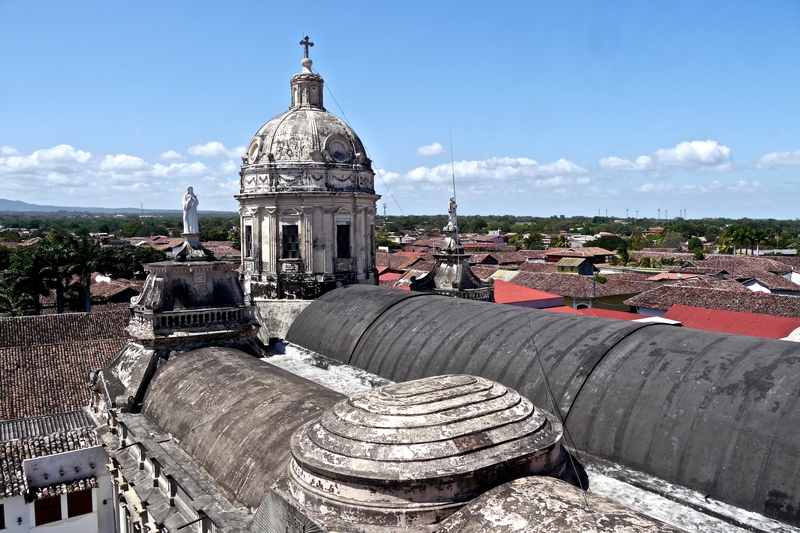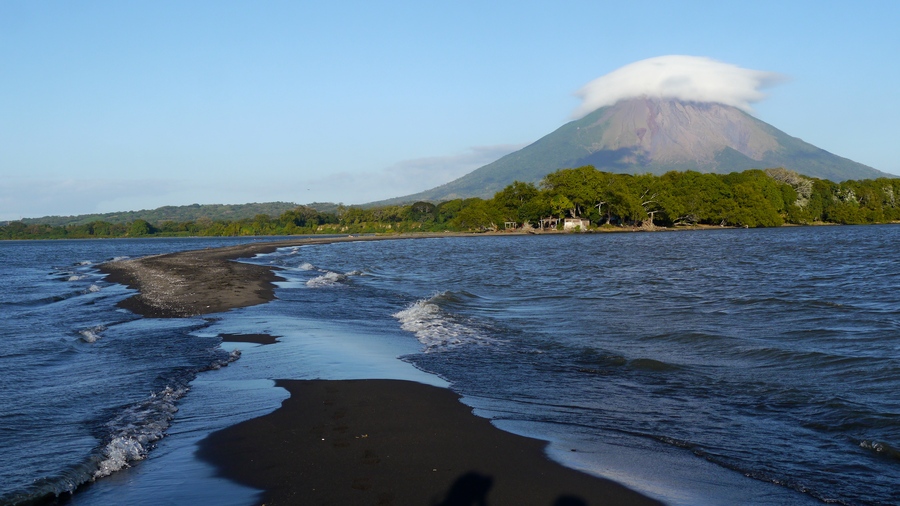
Things to See on Ometepe Island, Nicaragua
When the Spanish conquistadors first set their eyes on Lake Nicaragua, they named it the Mar Dulce, or Sweet Sea.
And it is not difficult to imagine why. For the lake, like an ocean, extends outward into the horizon for miles and miles.
At the heart of the massive lake, lies Ometepe Island, known in Spanish as Isla de Ometepe.
The island boasts a dramatic profile, windswept beaches, abundant wildlife and tranquil countryside. Flanked by two volcanoes and held together by an isthmus, it is both an icon of Nicaragua and one of the country’s top places to visit.
OMETEPE NICARAGUA: THINGS TO SEE AND DO
Lake Nicaragua is 161km long and 72km wide, making it one of the biggest lakes in the world. It is the largest body of freshwater in Central America.
Isla de Ometepe–the world’s largest freshwater island—lies at its heart. Along with San Juan del Sur, Granada, and the Corn Islands, it is one of Nicaragua’s main tourist attractions.
We visited Ometepe Island for two days, after spending a bit of time in the rainforests of Costa Rica. Though Ometepe Island was a highlight of our Nicaragua itinerary, it wasn’t due to any attraction in particular.
Instead, it was the island’s rustic nature, its abundant wildlife, and its laid-back vibe that drew us in and ultimately made it difficult to leave.
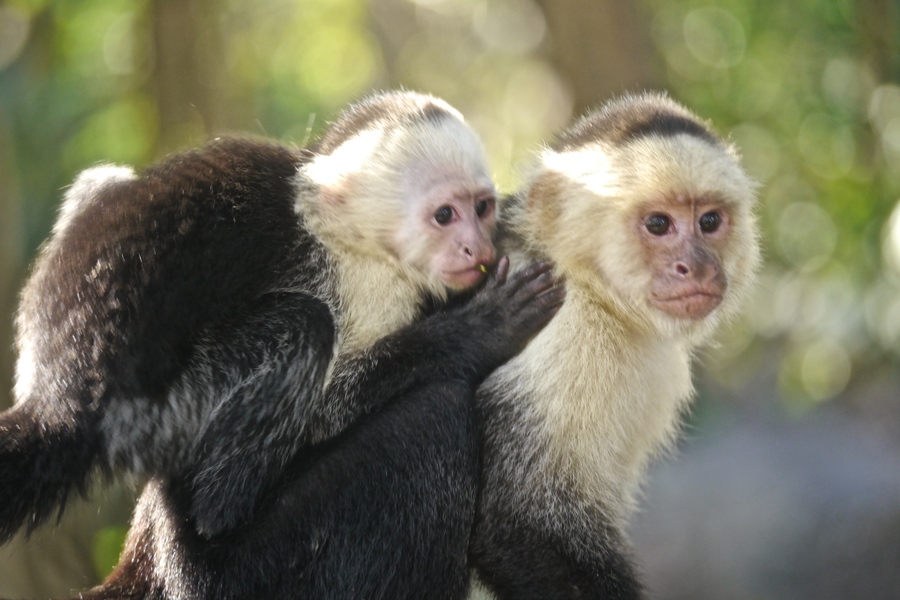
Setting foot on Isla de Ometepe is a bit like stepping back in time. I wouldn’t blame you if you spent your entire time on Ometepe simply soaking in the views and whiling away the day. It is the type of place that invites a slower pace of travel.
But still, there are a few noteworthy attractions that you should be sure to include in your Ometepe Island itinerary.
-
CHARCO VERDE ECOLOGICAL RESERVE
The Charco Verde Ecological Reserve covers about 20 hectares of tropical dry forest. It contains a network of hiking trails that encircle the park’s lagoon, providing views of the island’s volcanoes and black sand beaches.
One of the top places to visit in Charco Verde is Mirador del Diablo—a lookout over the expansive waters of Lake Nicaragua.
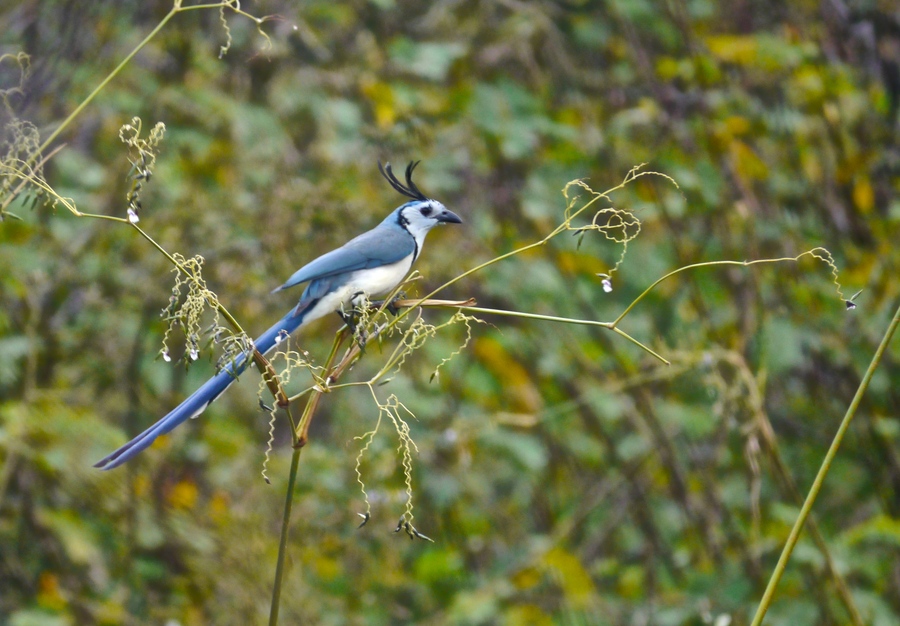
Many species of fish and water birds live in the Charco Verde lagoon, and walking the paths brought us face to face with some of the area’s exotic wildlife. Colorful birds flitted among the trees, immersing us in a symphony of song.
Admission to the Charco Verde Reserve costs US$5 per person. Entry includes access to a butterfly and bird sanctuary that showcases the island’s native fauna.
-
OJO DE AGUA
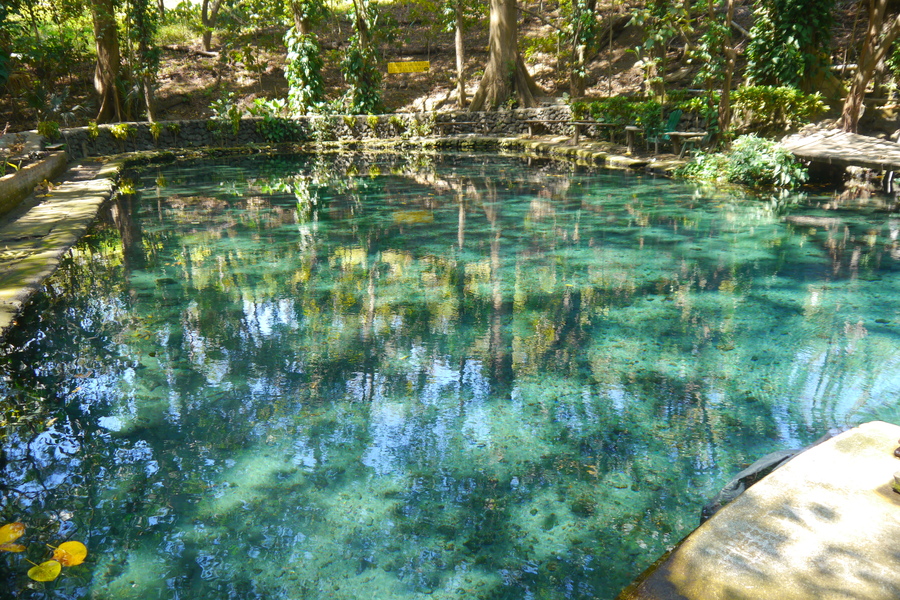
The water at Ojo de Agua is refreshing and cool. Many locals believe that the volcanic water has healing properties due to its abundance of minerals. It contains potassium, magnesium, calcium, sulfur and sodium.
The popular tourist destination is a wonderful place to relax for an afternoon. Its forested setting provides ample shade.
Admission to Ojo de Agua costs US$3 per person.
-
PLAYA SANTO DOMINGO
Playa Santo Domingo is the most popular beach on Ometepe Island. With waves lapping up against its sandy shores, the beach might fool you into thinking you’re at the ocean.
We walked along the stretch of sand, searched for birds, and listened as the waves as they lapped gently against the beach. Playa Santo Domingo’s sandy shores are home to dozens of bird species. Birds nest in the swamps of Rio Istian, parallel to the beach.
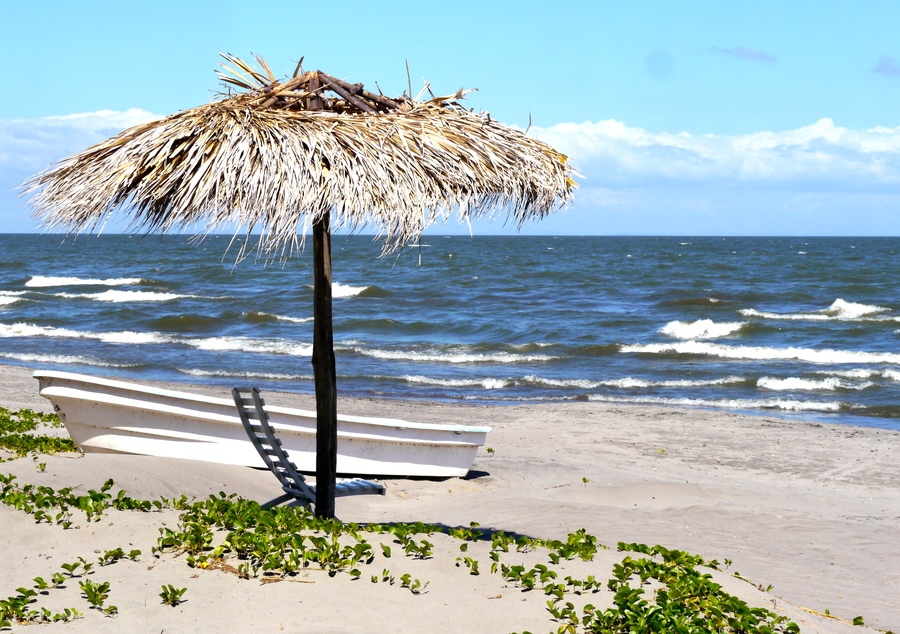
Behind the beach, a robust hotel infrastructure provides lodging opportunities for the area’s visitors.
We stopped at Playa Santo Domingo for lunch and enjoyed the beach’s ocean-like feel.
-
OMETEPE ISLAND PETROGLYPHS
Isla de Ometepe has been revered throughout history by generations of indigenous Nicaraguans. Early inhabitants considered the island to be a promised land. The Maderas Volcano was the sacred place of the sun, while Concepcion represented the moon.
Ometepe island is famous for its rich pre-Colombian history, which is evidenced in the intricate rock art found throughout the island. The rock art dates back to around 1000 B.C.
Considering the age of the carvings, the Ometepe petroglyphs are incredibly well preserved. The Crown Jewel of Ometepe Island’s petroglyphs is an elaborate calendar illustrating 360 days and eighteen months.
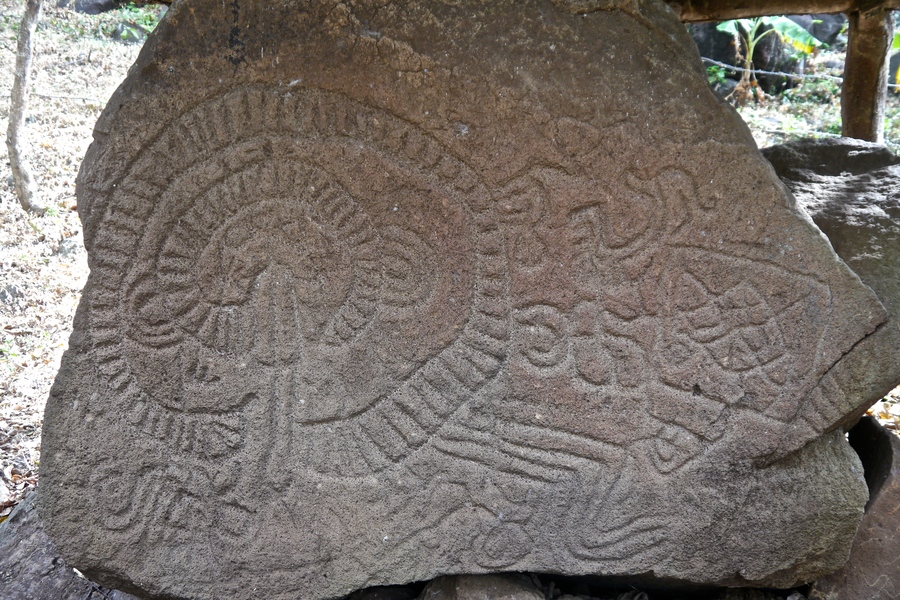
Many of the motifs on Ometepe Island’s petroglyphs contain spirals and circles. Other rock carvings depict the reptile and amphibian life on the island.
-
CONCEPCION VOLCANO
Concepcion is an active stratovolcano that forms the northwest part of Isla de Ometepe. On a cloudless day, it rises above the waters of the lake in dramatic fashion. The perfectly conical volcano dominates the island and can be seen from virtually everywhere. It is an ever-present reminder of the geological forces at play in Nicaragua.
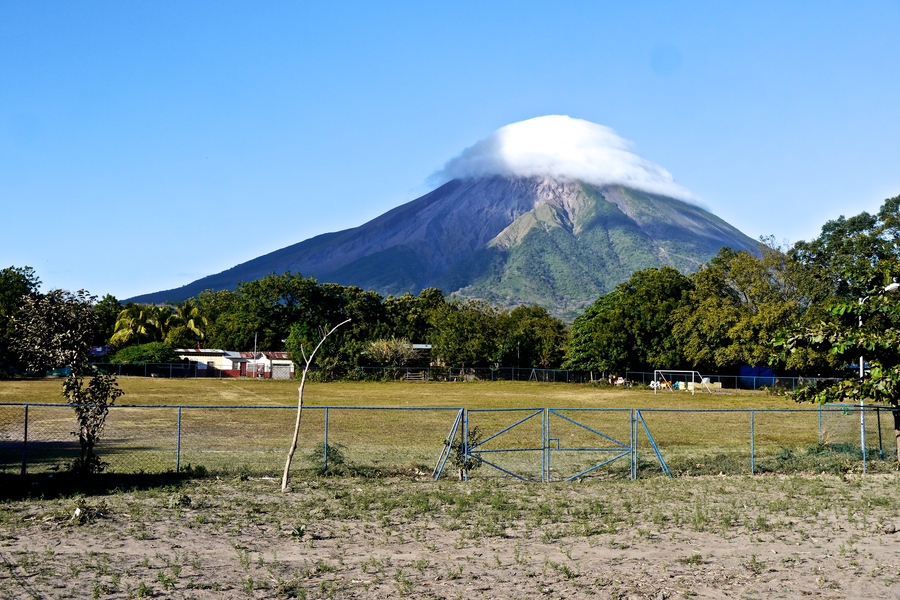
Though most visitors will be content viewing the volcano from afar, hiking to the top of Concepcion remains a top thing to do on Ometepe Island. The hike takes approximately 10 hours and begins in La Flor, near Moyogalpa.
On a clear day, Concepcion boasts a 360-degree view that encompasses both the Pacific and Caribbean coasts of Nicaragua. Most times, however, the top of the Concepcion remains shrouded in clouds.
-
PUNTA JESUS MARIA
Punta Jesus Maria is a thin peninsula of volcanic sand that juts out into Lake Nicaragua. The narrow spit of ebony sand, formed by the lake’s currents and sediments, is one of the top places to visit on Isla de Ometepe.
The spit is a popular nesting place for seabirds and waterfowl.
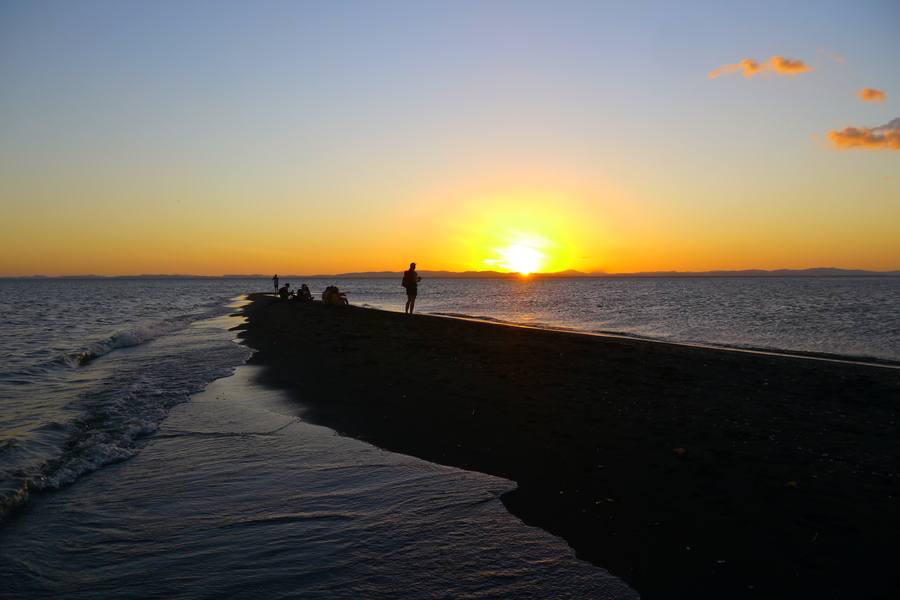
The peninsula affords impressive views of the island’s twin volcanoes. It is a great place to visit at sunset, after a full day of sight-seeing.
THE FUTURE OF ISLA DE OMETEPE
During our day tour of Isla de Ometepe, we chatted with the driver about life on the lake. Our driver spoke passionately about his beloved island and was visibly proud of the community in which he had lived his entire life.
Yet, when the topic of conversation shifted toward a proposed canal that would cut through Lake Nicaragua, we could feel his palpable discontent. He was adamant that the construction of a canal would bring suffering to his community. And he feared that allowing large vessels to cut through the lake’s waters would alter the balance of life on Ometepe.
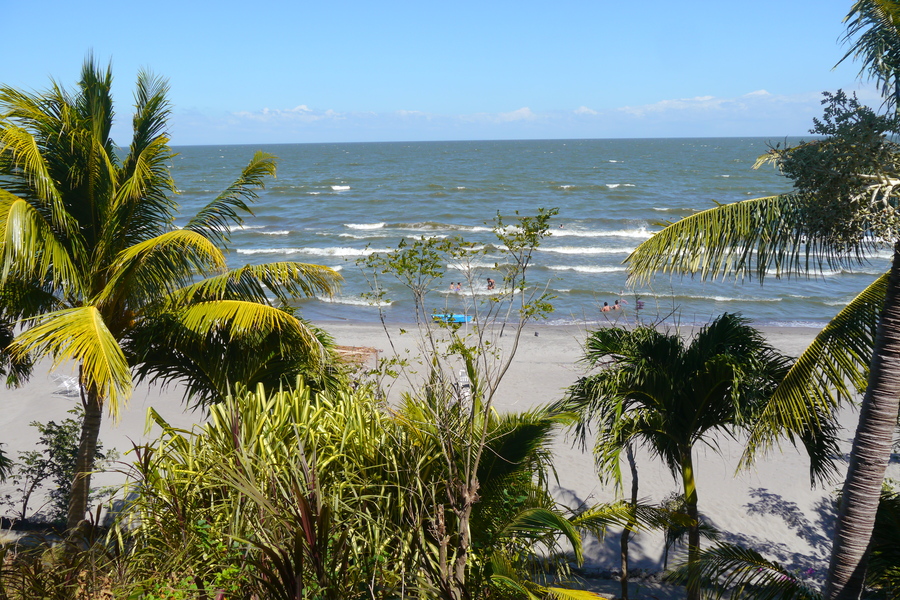
Though the Nicaraguan government believes a canal project like Panama’s can help propel the country out of poverty, our driver was hesitant. He feared that the environmental impacts and negative implications for tourism in the area would dramatically outweigh the benefits.
Ometepe Island is a major source of drinking water and irrigation for Nicaraguans. The lake’s water waters house numerous species of freshwater fish and sharks. In communities where fishing is a major source of income, the consequences of building a canal and destroying the lake’s habitat could be devastating.
WHERE TO STAY ON OMETEPE ISLAND
There are plenty of lovely places to stay on Isla de Ometepe. The island is a popular destination when backpacking Nicaragua due to its affordable prices and attractive offerings. Most of the island’s accommodations are quite inexpensive by international standards.
On the budget end of the spectrum, El Bamboo Cabins boasts unique accommodation on the shores of the lake. Guests rave about its waterside location, its friendly hosts, and its clean yet basic rooms.
If you’re okay splurging, the lovely Villa Ometepe caters to those seeking higher end accommodation. The three bedroom home has hammocks, a soaking pool, a kitchenette, and lovely island views from its terrace.
ISLA DE OMETEPE FERRY
There are two ports on Ometepe: Moyogalpa and San Juan. Both are serviced by boats, though the vast majority of the ferries and boats arrive in Moyogalpa, the island’s main town.
Ferries and lanchas make the trip between San Jorge and Ometepe Island. It takes between 45 minutes (lanchas) and an hour (ferries) to complete the one-way journey.
Departures are frequent and don’t require advanced reservations.You can check the up-to-date timetables at ometepenicaragua.com.
GETTING AROUND OMETEPE NICARAGUA
On Ometepe Island, cars share the road with horse-drawn buggies and wild animals mix with locals in the towns and countryside. The island has one primary road that circles its exterior and connects visitors and locals to the main towns and sites along the way.
To best explore the many things to do on Ometepe, we decided to hire a driver to take us around. Within the span of a single day, we explored beautiful beaches, soaked in views of its towering volcanoes, visited ancient rock carvings, and learned a bit about the future of this small paradisiacal island.
Hiring a car and driver cost $80 for the entire day. It allowed us travel the island at or own pace.
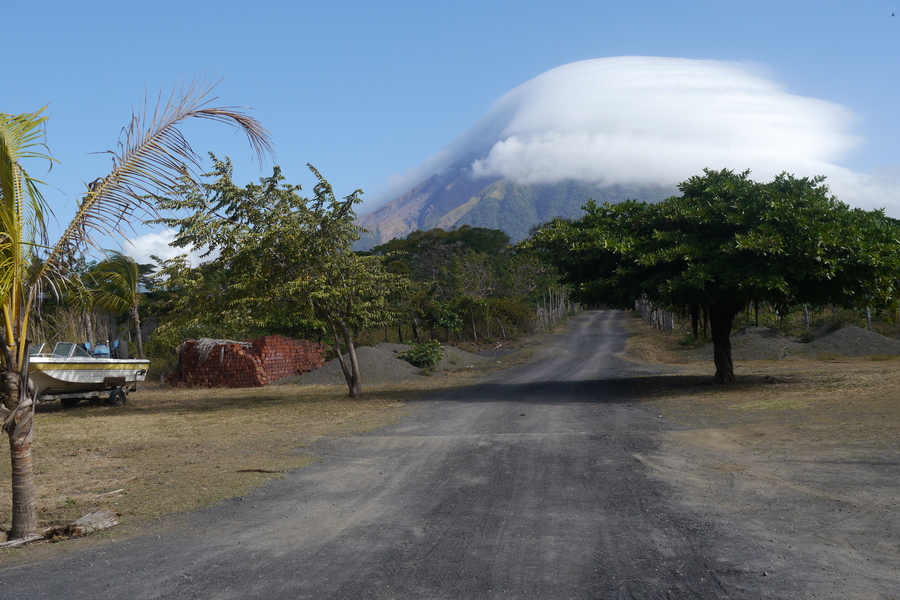
If you have more time to explore the island, you can also consider exploring the island by bus. Local buses circle the island and connect many of the main towns with regular service.
Renting a motorbike, scooter, or 4X4 is also an option.
****
Ometepe Island is one of the most beautiful places to visit in Nicaragua. With its sandy beaches, towering volcanoes and unparalleled sunset views, it is a place that lures both adventure-lovers and relaxation-seekers.
I loved our short visit to Isla de Ometepe. But as I watched the fiery sun set behind the jet-black sand of Punta Jesus Maria, I couldn’t help but shake off a feeling of sadness. I thought about our driver’s fears. And about the future of the beautiful island.
And while I was grateful to enjoy the island without worrying about the massive cargo ships obstructing my view, I couldn’t quite shake off the fear that they might encroach on the lake’s pristine habitat in the future.
